When you start playing soccer drills, the last thing on your mind is how to prepare your body for them. However, this is something that needs to be addressed right away. You see, there are specific things that need to be considered beforehand so that you don’t hurt yourself while performing these drills. The risk of injury while playing any sport is always present; therefore, it’s in your best interests to take precautions before diving into the action head-on. Fortunately, this doesn’t mean you have to spend hours at the gym before attempting any of these drills. In fact, preparation isn’t even strictly related to the gym! It mainly involves stretching and warming up specific muscles with certain movements or activities so they can handle a taxing training session afterward.
How to Prepare Your Body for Soccer Drills
Here are 5 steps that will help you get ready for soccer drills:
1. Training Shoes
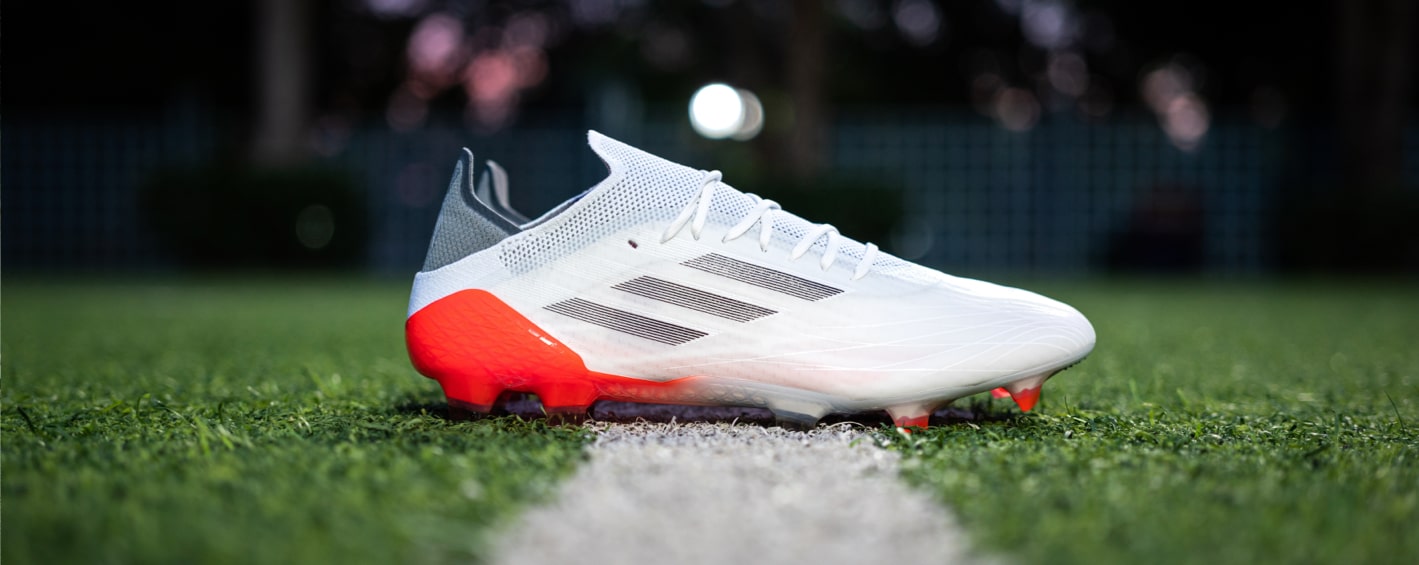
You might think that changing your shoes is something you need to do after you’ve covered all the other aspects of preparation, but no. This is something that you need to do beforehand. Why? Well, the bigger, heavier, and stiffer your cleats are, the more difficult it will be for your calves and shins to properly stretch and warm up.
Soccer shoes are designed for quick movements and pivoting, which is why they’re much lighter than regular cleats. Because these shoes are lighter, they can be easily stretched and molded around your shins and calves so that they don’t push and press against these sensitive areas while you’re trying to warm them up. In fact, if you have regular soccer cleats, you might actually find it more difficult to properly stretch these muscles because the stiffer material will prevent them from being properly stretched out.
2. Stretch Your Ankles and Shins
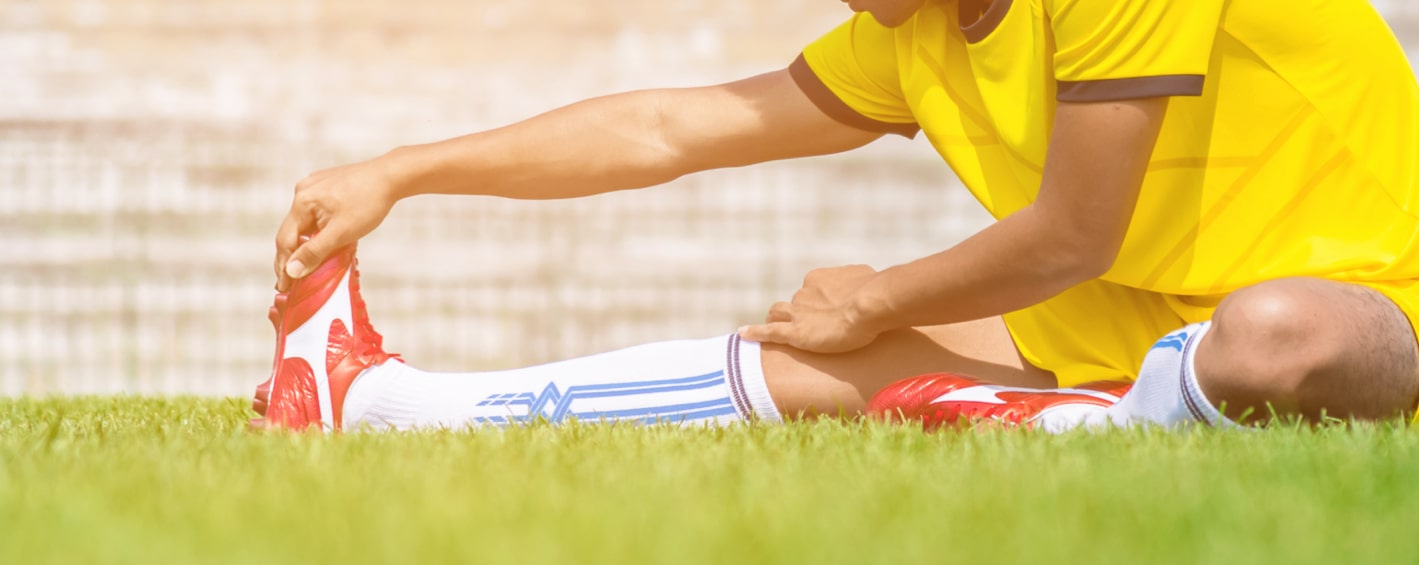
Your calves and shins are vital because they support most of your body weight while you’re running or kicking. That’s why it’s incredibly important to stretch them as much as possible before starting any soccer drills.
You should start by stretching your shins with your heels placed on a wall. From here, you should try to push your heels further away from the wall, allowing your shins to stretch out as far as possible. You should then stretch your ankles by placing your toe against the wall with your heels resting on the ground. From here, you should try to push your toes further away from the wall, allowing your ankles to stretch as far as possible.
3. Stretch Your Quads and Calves
Your quads and calves work together to help you change directions while running, especially when you’re at top speed. Because of this, they need to be properly stretched out so that they don’t push against your shins and cause unnecessary pain or discomfort. While standing on the ground with one foot, you should lift your other foot off the ground and try to get your knee as close to your chest as possible. From here, you should try to keep your toe pointed towards the ground as you gently pull your foot back towards your chest.
You should do this several times so that both your calves and quads get enough stretching done to prepare them properly for soccer drills.
4. Warm-Up Your Core
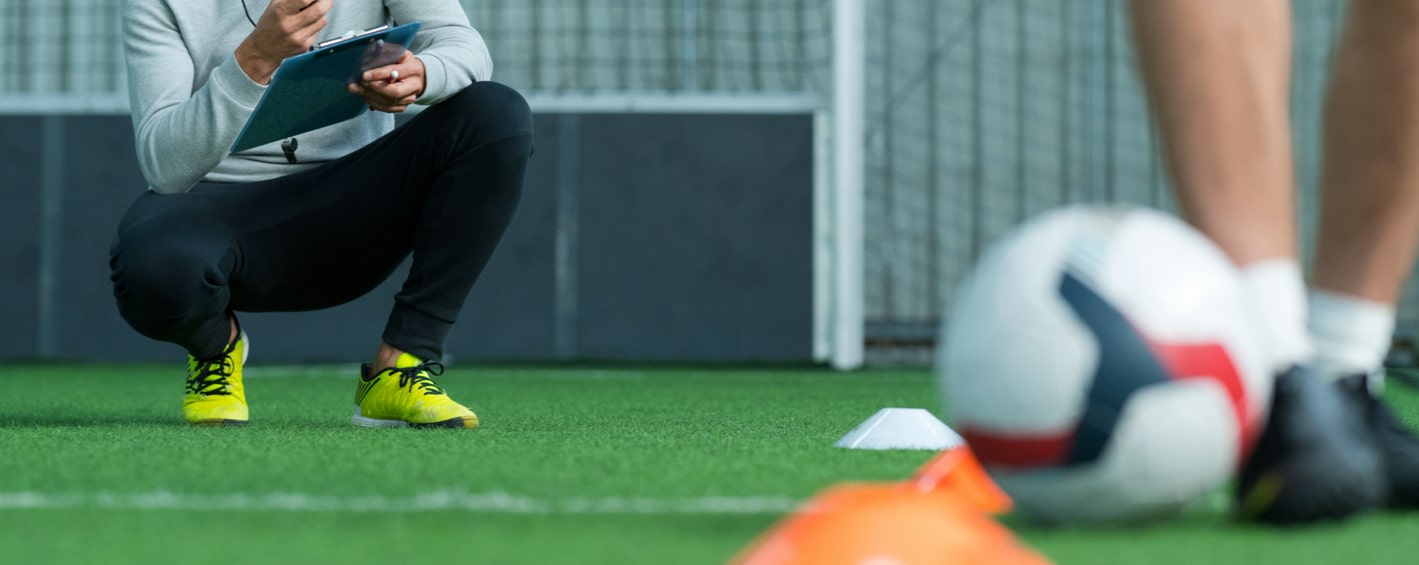
Your core isn’t just responsible for holding your organs together; it also helps you maintain proper posture and balance while playing soccer. This is why it’s important that you warm it up before starting any soccer drills. A good way to do this is by lying on your back and performing crunches with a light weight in each hand. Alternatively, you can lie on your back with your feet raised above your head while grabbing a soccer ball. From here, you should roll the ball down your chest and towards your stomach with your feet lifted above your head.
You should do these warm-up exercises several times until you feel your core muscles properly warmed up and ready to handle some intense soccer drills.
5. Warmed-Up Bodies!
Now that you’ve covered all the bases of proper preparation, you can confidently engage in any soccer drills or exercises with the knowledge that your body is ready to handle whatever is thrown at it. Remember, how well your muscles are prepared for soccer drills will determine how long you can last during a training session without experiencing extreme muscle fatigue. By taking the necessary precautions beforehand, you’ll experience less fatigue and be able to perform at high levels for longer periods of time.
Not only will this make you a more valuable member of your team, but it will also allow you to progress faster while learning new skills and techniques on the field.


Improve Your GameJust 1.99 p/m
Exclusive drills and sessions, get involved today!
- 100’s of Drills
- Coach to Camera Videos
- Sessions from Pro’s
- Industry Leading Advice
Basic Soccer Drills
No matter how much time you spend practicing or strategizing for upcoming opponents, there are always little bits of skill that remain elusive. To take your game to the next level, you need detailed strategies that target specific skills. Luckily, there are plenty of soccer drills that help improve various aspects of your game. Whether you want to work on a specific pass or become more comfortable dribbling at high speeds, these drills will help you get there.
Dribbling
First, let's go over some dribbling skills. The first one is the inside-out dribble. This is a great way to beat a defender who is trying to get inside your path. You use the inside of the foot to push the ball past the player while going the opposite direction. Another great skill is the outside-in dribble. This is when you use the outside of the foot to push the ball towards the direction you're going. This is great when you're trying to get away from another defender or just be more creative with your dribbling.
A third skill is the stop-and-go dribble. This is when you stop the ball with your foot and then quickly push it again in the opposite direction. This is a great way to beat a defender and then quickly get past them. The last dribble skill is the drag back. This is when you're near the defender and you use your outside foot to drag the ball back towards the direction you were originally going. This is a great way to trick a defender and then quickly get past them.
Passing
One of the biggest areas of focus for soccer players of all levels is passing. After all, it's a basic skill that appears in every game of soccer. Passing drills can help you become more accurate, increase your passing range, and develop chemistry with your teammates. One great passing drill is called the ping-pong or wall pass. Start by finding a wall with a teammate. Place a soccer ball about one foot in front of the wall, and then pass the ball back and forth against the wall.
Once you get comfortable with this level of difficulty, move the ball farther away from the wall. Another great passing drill is called the triangle passing drill. This is when three players are positioned in a triangle shape and have to pass the ball to each other.
Shooting
Another important skill that you can focus on during every game is shooting. This is an area of the game that goalkeepers are often expected to excel in, but many other players need to work on as well. The key to improving your shooting is to understand the mechanics of the shot.
There are two key aspects of shooting:
- Follow-through
- Footwork
The follow-through is the movement you make after you kick the ball. It's important to follow through in a way that ensures the ball goes towards the goal. The footwork is the way that you line up your shot before kicking the ball.
Defense
When you're on defense, you need to be able to react quickly to the other team's moves. You also need to be aware of your surroundings to prevent mistakes like losing the ball. Here are two great defensive drills that can help.
- The first is a passing drill called the 1v1 defensive drill. This is when an attacker goes against a defender. The defender needs to try to keep the attacker from passing the ball to a target. The attacker needs to pass the ball to their target. The defending team needs to win a certain number of points before the attacking team gets their points.
- The other defensive drill is a dribbling drill called the 1v1 attacking dribble. In this drill, an attacker goes against a defender. The defender needs to try to prevent the attacker from getting to a target.
Running and conditioning
When you're playing a high-intensity sport like soccer, it's important to work on your endurance during practices. This can help keep you from becoming fatigued during games and will be beneficial to your entire team. Here are two great running and conditioning drills to do with your team.
- The first is called the 30-30-30-30-30. This is where a group of players does 30 seconds of running followed by 30 seconds of walking for 30 rounds. This helps players improve their endurance.
- Another great running and conditioning drill is called the shuttle run. This is where two groups of players run back and forth between two targets.
Awareness and Technique Drills
When you think of drills, you probably imagine players dribbling and passing with speed and precision. While those drills are important, they aren’t the only way to improve your game. Many of the best drills focus on improving your awareness and focus during the game, as well as your technique. These drills will help you train your focus and awareness, which will help you avoid mental mistakes that can lead to turnovers. They will also help you improve your technique and mechanics, which will make you a better overall player:
- Wall Pass Drill - This drill will help you improve your technique by focusing on proper footwork, balance, and depth. Start by setting up a wall about 18 to 24 inches away from you. The wall should be set up parallel to your body. - You want to start about 6-8 inches away from the wall. This will let you focus on your footwork and keeping your balance. - Now, dribble the ball towards the wall and pass it back towards the other side of the wall. This will help you get the mechanics down. - After you’ve gotten the feel for the drill, start switching the direction of your pass. Be sure that you’re passing with the proper technique, as this will help you make cleaner passes in the game.
- Free Kick Drill - Free kicks are an important part of the game, and they can help you score big points on the scoreboard. - This drill will help you focus on the mechanics of a free kick, so you are prepared when you are awarded a free kick during the game. - Start by setting up a cone or a flag about 18 inches away from the ball. You want to set it up about knee height. - Your goal is to hit the cone with the ball as you are taking a free kick. This will help focus on your technique and mechanics. - If you aren’t hitting the cone, you can adjust the height of the flag or cone. This will help you focus on the mechanics of taking a free kick. - If you are taking a free kick in the game, you want to make sure that you start the ball at your knee so that the other team doesn’t know what you are doing. -
- Crossing Drill - Crossing is an important part of the game, but it isn’t something that comes naturally to everyone. - This drill will help you get the feel for the mechanics of a good cross and let you practice it so that you can be prepared when you need to cross the ball during a game. - Start by setting up a cone about 10-15 feet from the ball. You want to set it up at knee height. This will help you focus on the proper mechanics while crossing the ball. - After you have crossed the ball, you will want to look for the ball to hit the ground. If it doesn’t hit the ground, it will go out of bounds. - Once you’ve crossed the ball a few times, try to get the ball to land on the ground. This will help you get the feel for a good cross and know what to look for in a game.
Agility & Footwork Drill
Agility and footwork are two of the most important skills in soccer. This drill will help you with both of them, so you will become a better all around player. This drill is perfect for players of any skill level. It is simple, but it is sure to get your heart pumping. This drill is also good for kids, because it will help them build strength and coordination. To do this drill, you will need two cones or markers. The cones should be set up about 10 feet apart from each other, with plenty of room to move around the cones. The cones should be about 6 feet apart from each other.
Now, start with one foot in each cone. You want to be facing the opposite cone, so that you are moving in a straight line. Next, you want to hop with one foot in each cone and move towards the opposite cone. Once you are in front of the second cone, hop back and continue to the first cone. After you have done this a few times, you can add some speed to the drill to make it even more challenging!
Free Grassroots Fun Soccer Games eBook

Keeping players on top of their game throughout the season is critical, and small-sided games are ideal for this. There are over 50 activities in this guide to help you do just that.
Download Free NowCupello Soccer Drills for Beginners
1. Rule the Castle
This fun and inclusive game helps you practice dribbling and winning possession.
2. King of The Ring
Playing this game provides young players with a lot of repetition in game-related skills, which will help them become the best they can be.
3. 1v1 to Goal
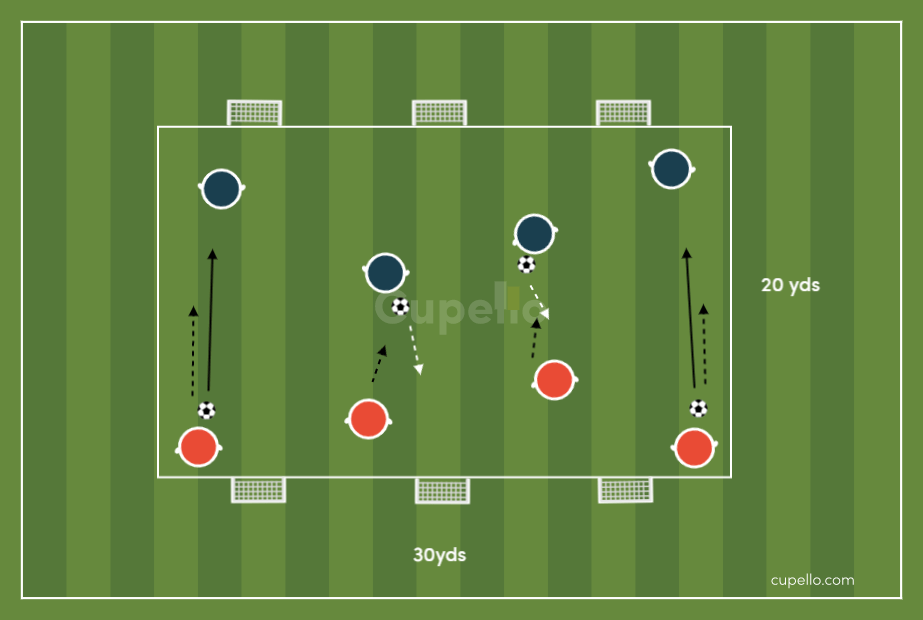
Being able to master 1v1 situations and beat opponents by manipulating the ball is crucial at any level and stage of development.
4. Three Player Passing Technique
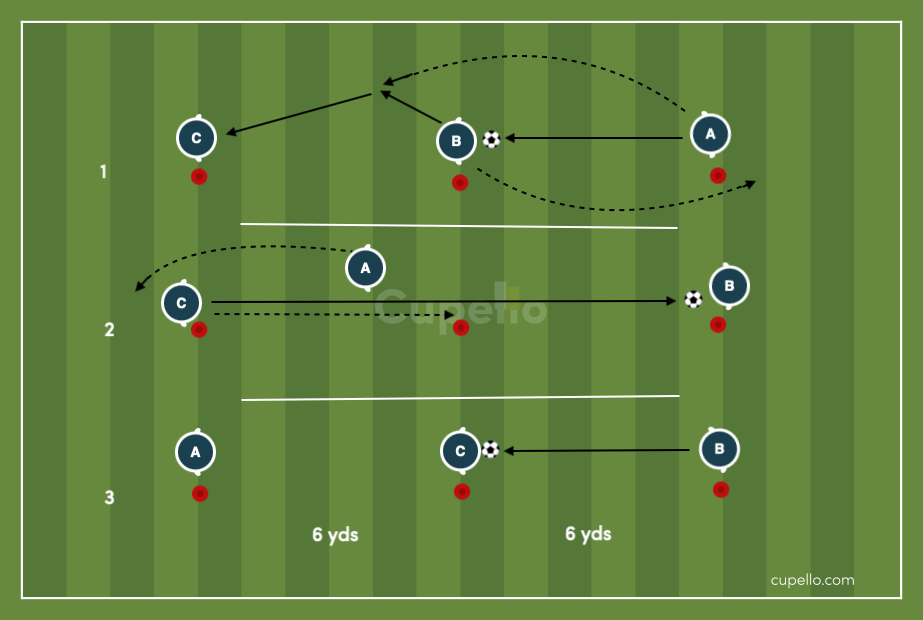
Using one and two-touch play as the foundation of a good passing game, individual as well as group skills are developed.
5. Drop the Ball and Play
Game-based activities are a great way for players to learn, socially, technically, and physically, if they provide players with fun experiences.
6. Shrinking Your Goal
It makes it harder for teams to score in this fun game if the goal is made smaller or if the team misses the goal, it gets bigger to help them score.
Coaching to Consider
There are plenty of soccer drills that help improve your skills while having fun. In this article, we went over dribbling, passing, shooting, defense, running and conditioning, and more. These are important skills that every soccer player needs to have in order to succeed. If you want to take your game to the next level, make sure you are focusing on improving your skills. There are plenty of soccer drills available to help you do just that.
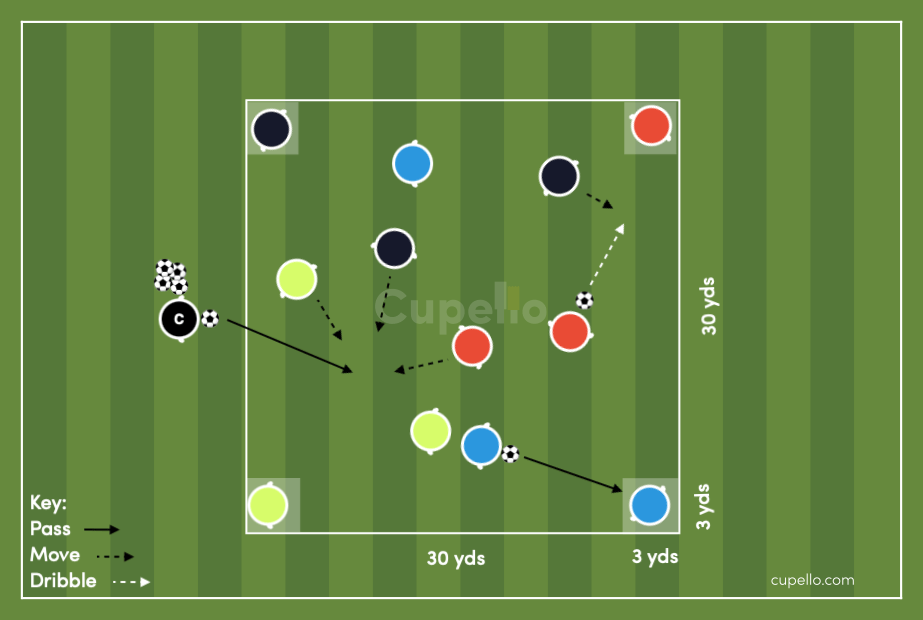
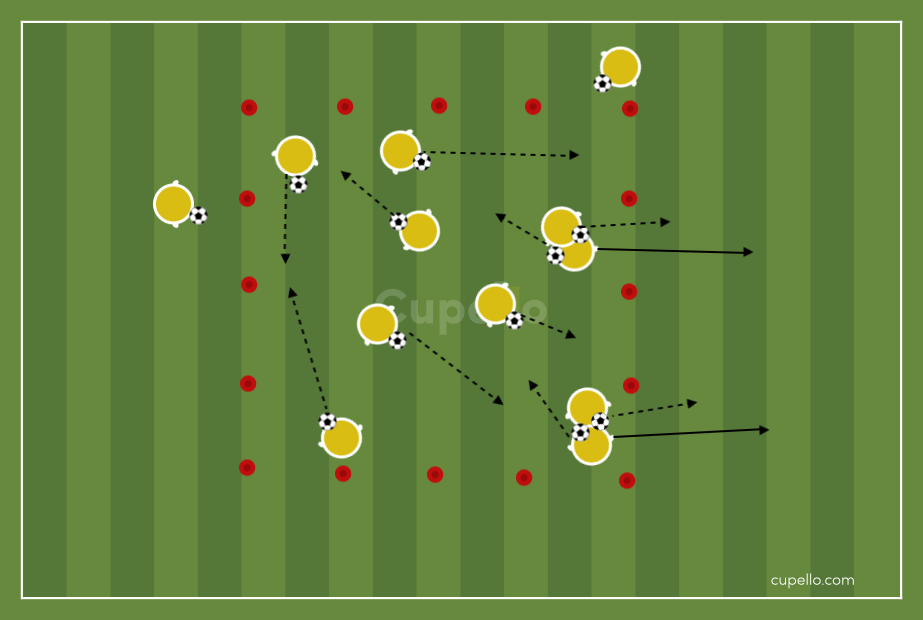
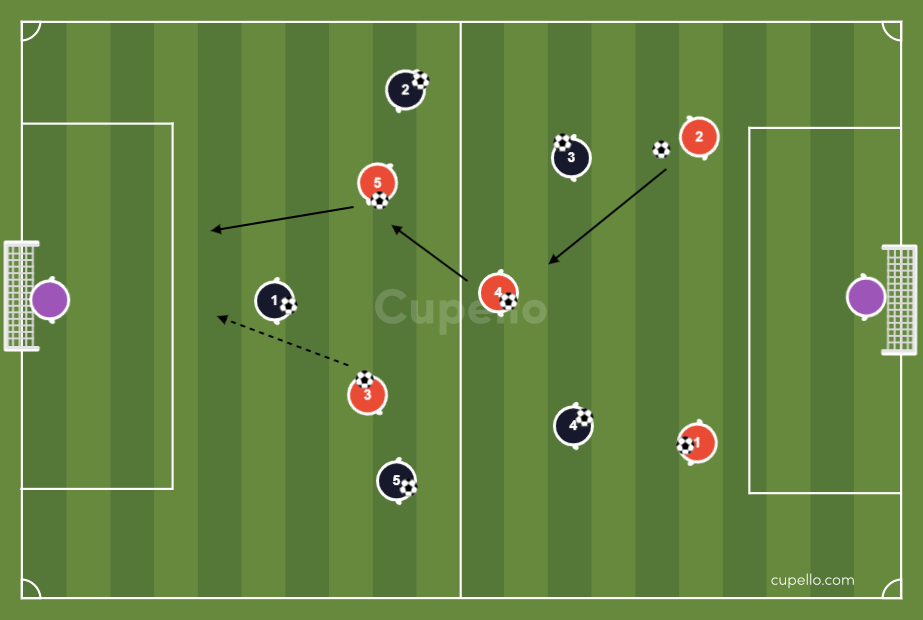
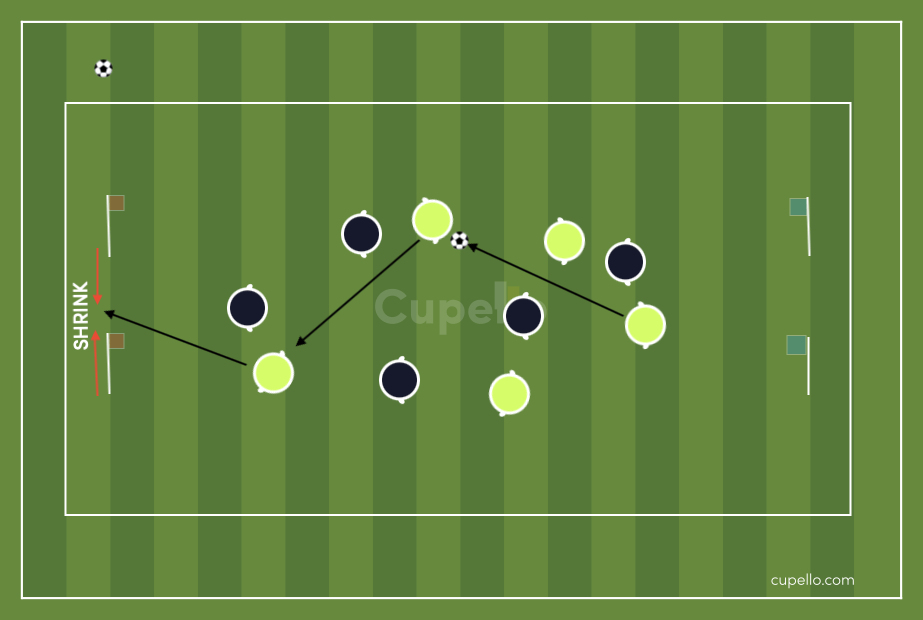
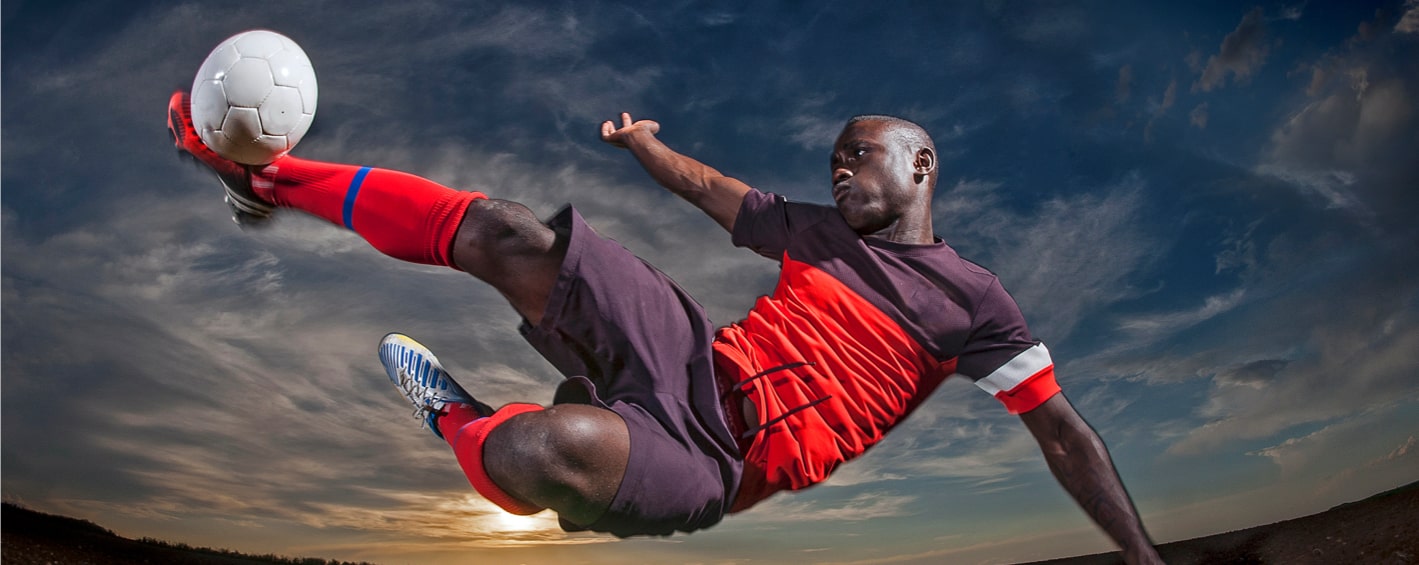
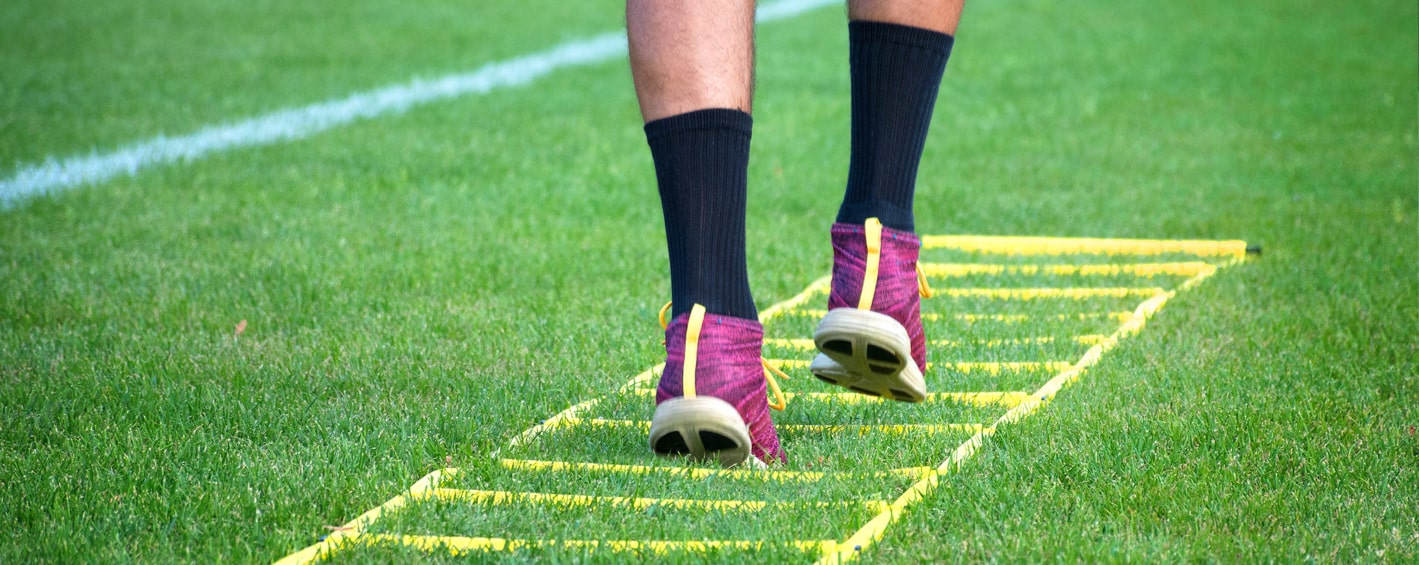
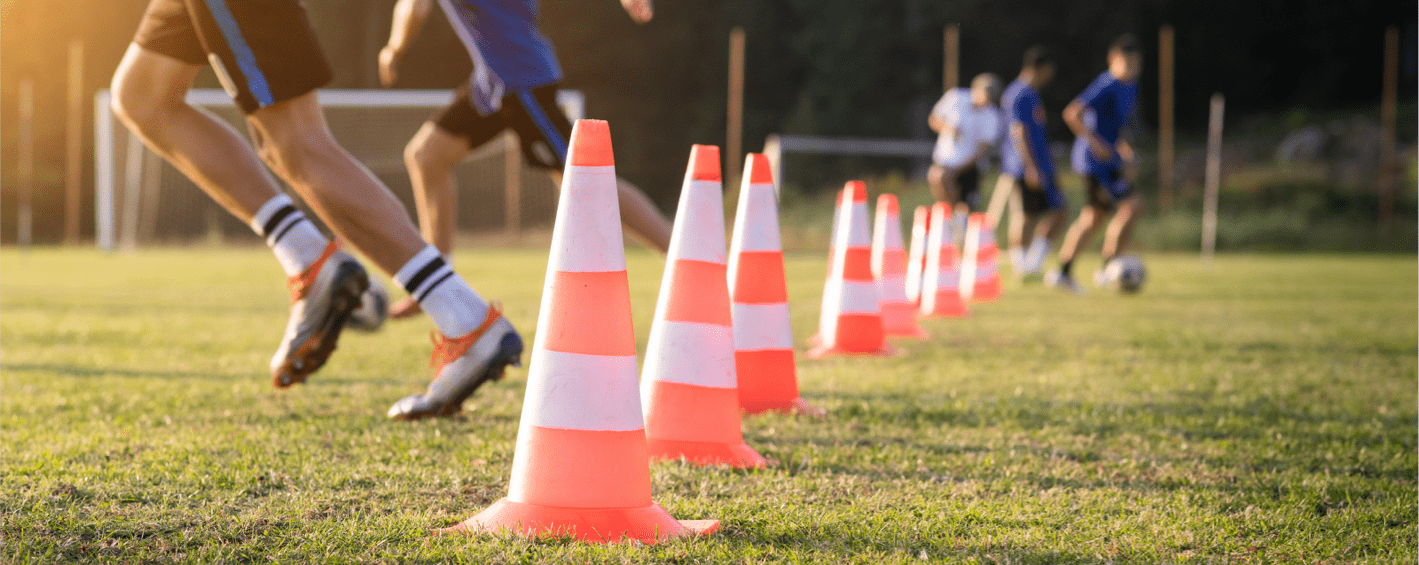
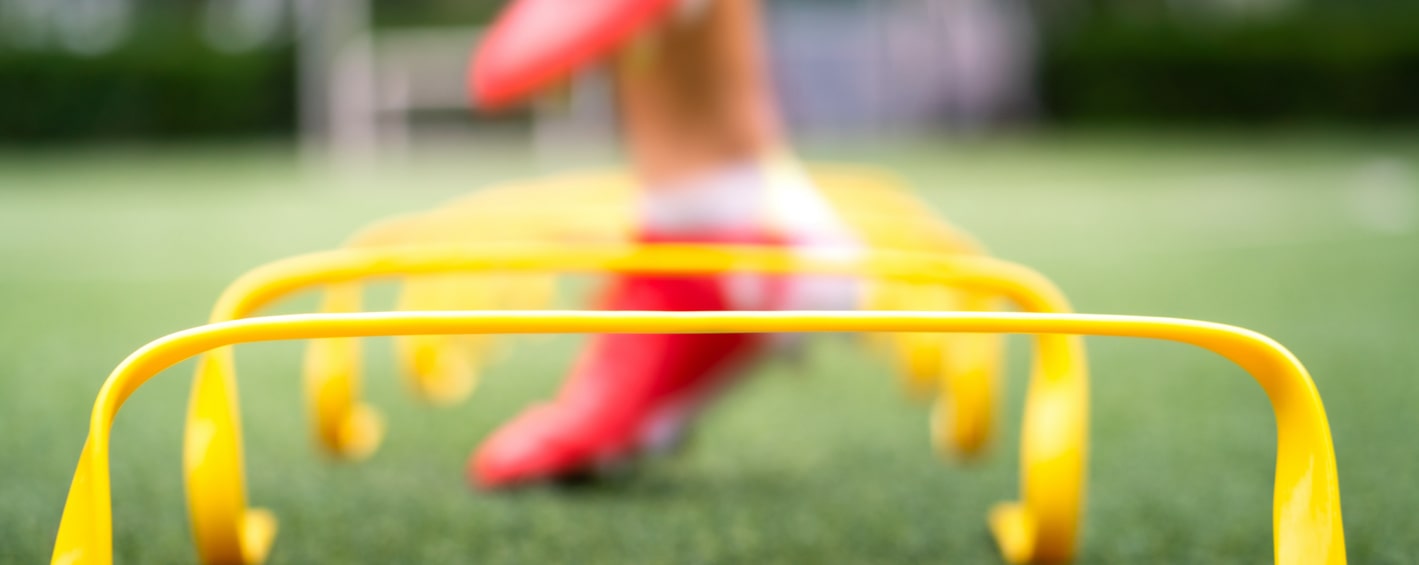
Cupello
Rethinking soccer coaching via our industry leading tools. Built to offer effective coaching development solutions for players and coaches of all levels.